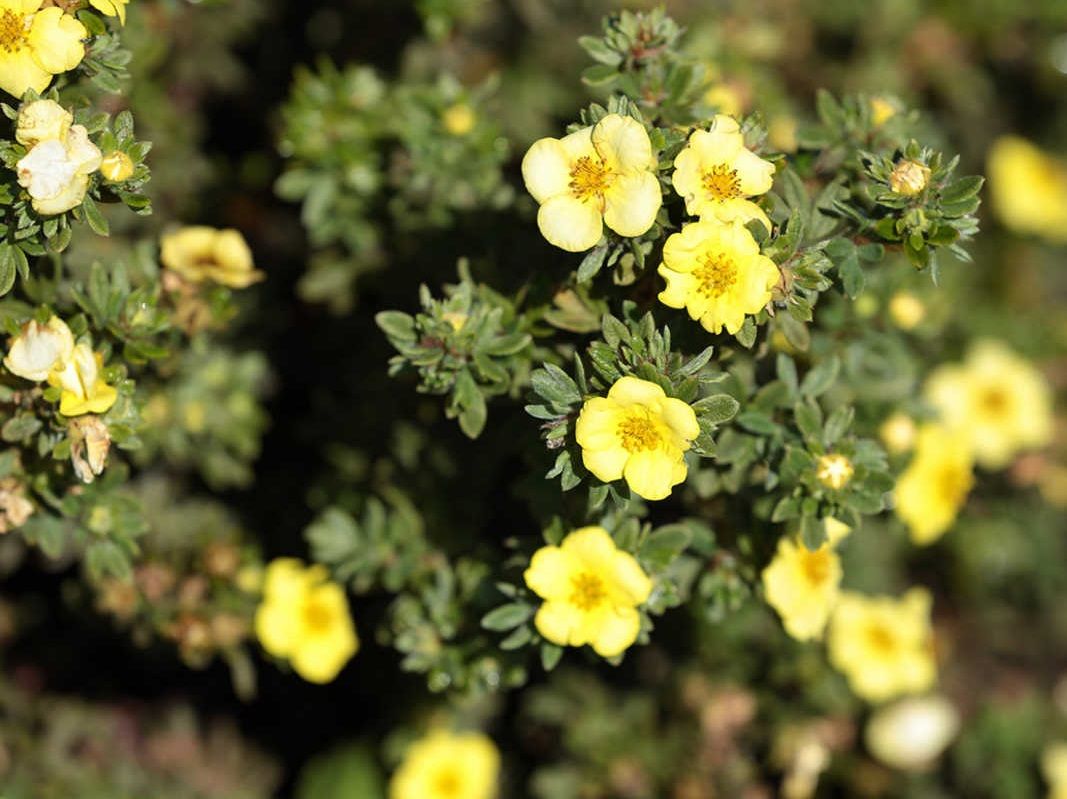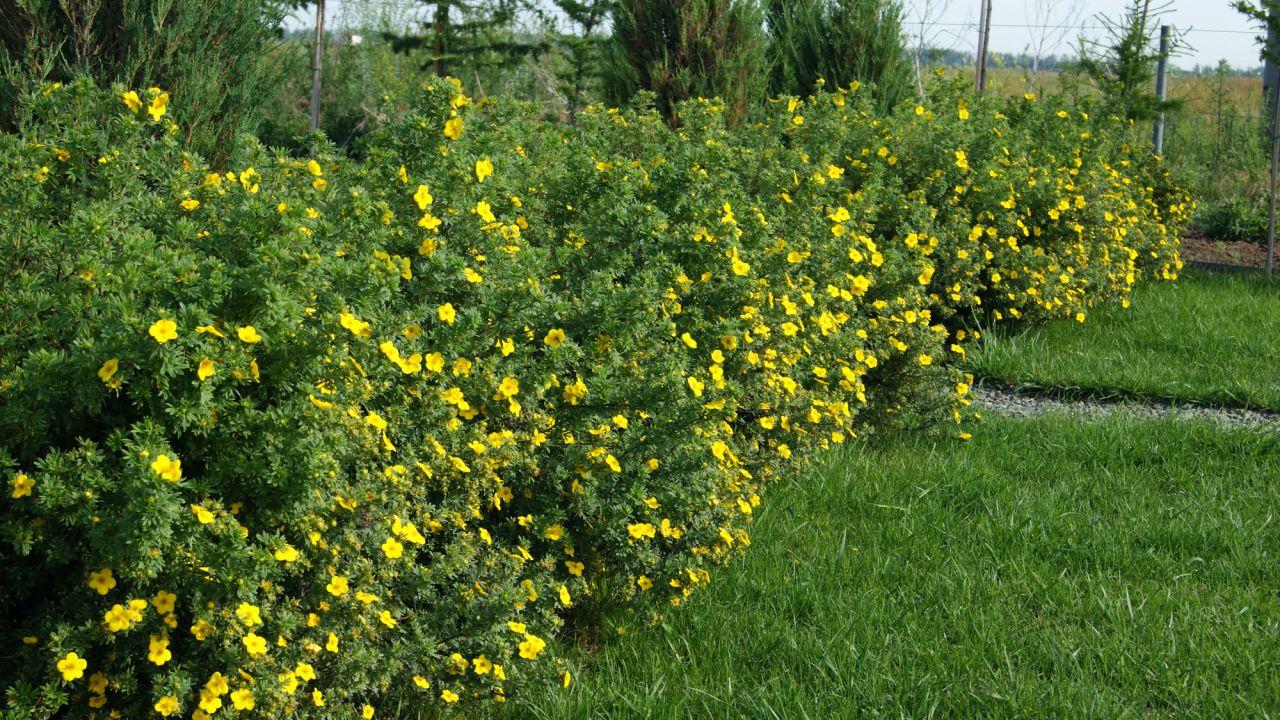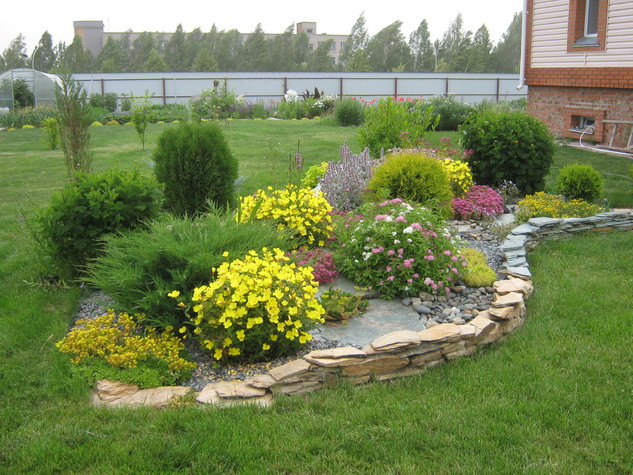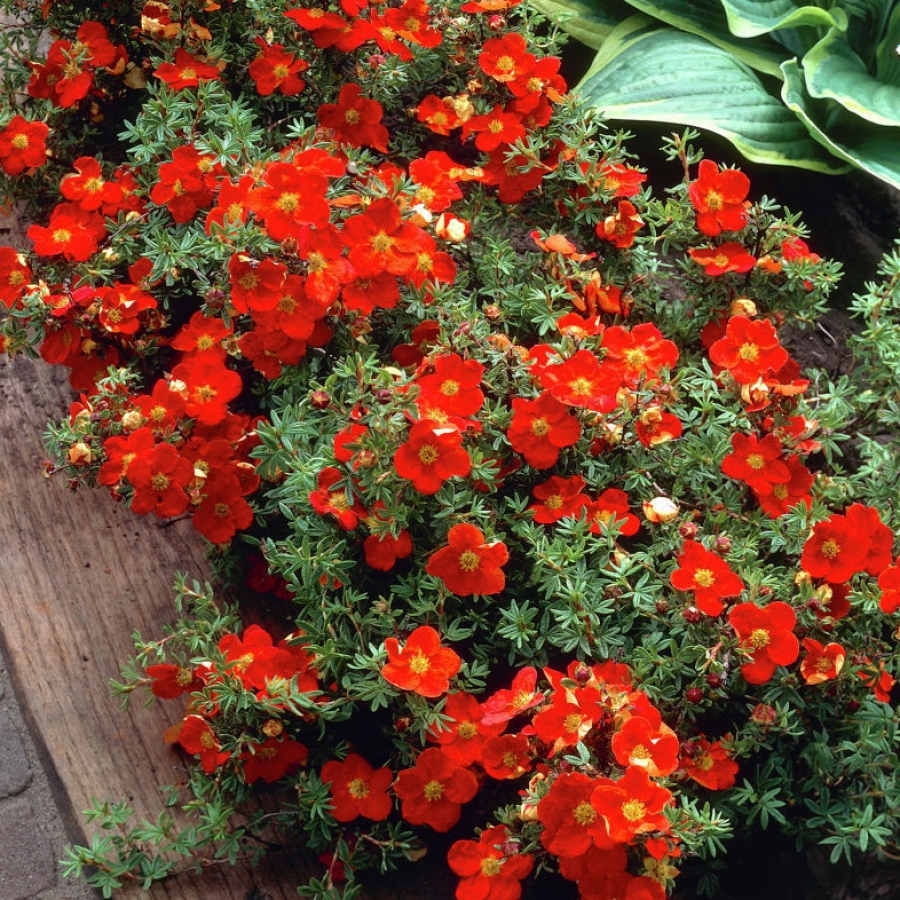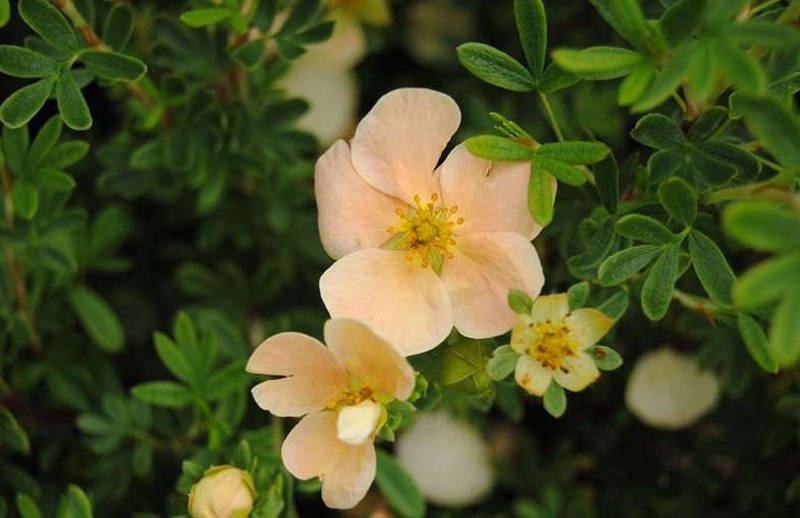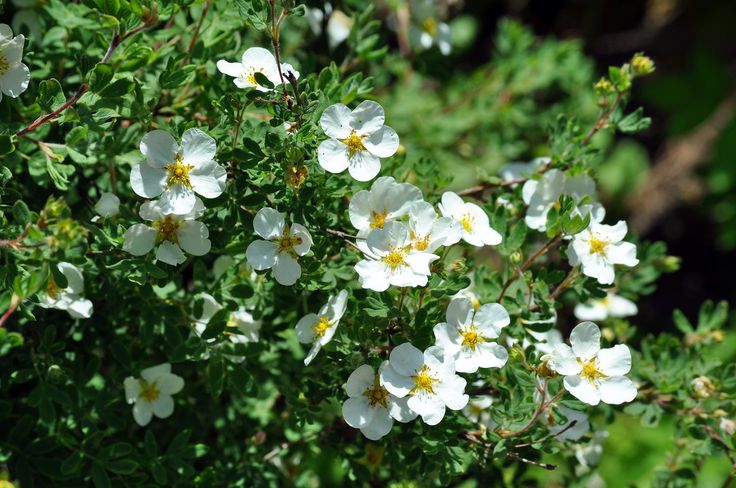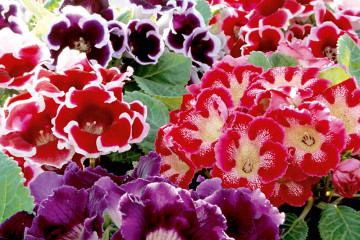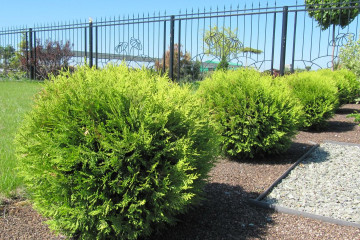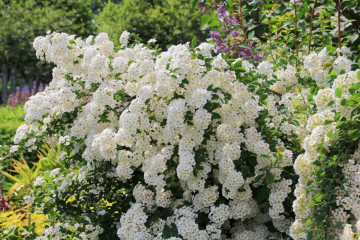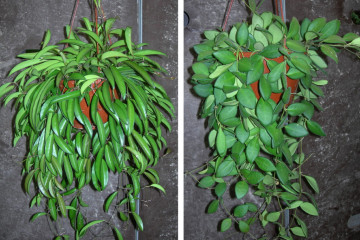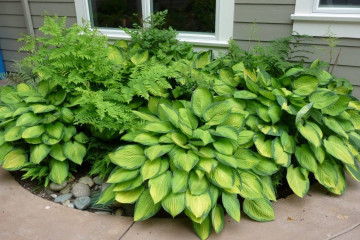Shrub Potentilla - what it looks like, types and varieties
Content:
Shrub Potentilla (Kuril tea) is a medicinal and ornamental plant of the Rose family. The botanical name is daziphora, or shrub potentilla, another common name is shrub five-leafed. In various editions of the botanical classification, the genus of the species is disputed. In Russia, this species is ranked among the genus Pentaphylloides.
Shrub cinquefoil
The culture has been known in the world gardening art for more than 300 years. Below in more detail about the types of Potentilla, and how this plant can be useful in the garden.
Origin and appearance
The natural habitat of dazifora is the entire northern hemisphere. However, the areas of its distribution with the differentiation of the climate were divided by territories with arid and hot climates. Currently, the wild variety can be found in the mountainous terrain of Eastern Siberia and the Far East, the Caucasus, Mongolia, China, Japan, and the northern United States.
The variety most commonly found in nature is yellow cinquefoil, which is a shrub that varies widely in height - from 10 to 150 cm. Branches can have a vertical or almost horizontal growth pattern. The bark on the trunk and old branches exfoliates, it is brownish-gray or red-brown, young branches are covered with hairs in the form of a pile. Leaves up to 3 cm long can be light or dark green, they are fleecy-hairy and collected in the form of complex feathers of 3-5 pcs.
Potentilla flowers are formed at the ends of the shoots of the current year, single or collected in groups of 2 to 7 pieces, have five whole petals. The middle of the flower is fluffy due to the large number of stamens (30 or more). Due to the large number of shoots, the bushes look abundantly flowering.
Flowering duration
An almost unique in nature positive property of Cinquefoil as an ornamental plant is long, abundant flowering. In the conditions of the Central Region, the growing season begins in the second decade of April. The growth of young shoots is activated in mid-May and continues until September. All this time, buds are formed on them.
The first flowers of the five-leafed bush can be seen in the second half of June. Duration of flowering is 2.5-4 months.
Nepalese and Mongolian traditional medicine widely uses dazifora in the form of decoctions and infusions for the treatment of diseases of the stomach and intestines.The extract was found to normalize the emotional state, improve muscle tone, cause anti-inflammatory, hemostatic and diuretic effects.
The use of shrub Potentilla in landscape design
Due to the variety of varieties with different patterns of shoot growth and color of flowers, the cinquefoil shrub is used in landscape design in the form of the following elements:
- solo (main) component of the landscape;
- undersized and herbaceous forms - a good ground cover crop in open slopes;
- curb plant;
- hedge;
- alpine slide and rockery.
Types and varieties of shrub Potentilla and their description
The world collection of five-leafed varieties includes more than 130 species of bush, tree-like and herbaceous forms with simple and double flowers. Firms engaged in the cultivation of ornamental plants offer a wide range of Potentilla, which can be planted based on the conditions of a particular garden plot. Below is a description of the most common varieties.
Cinquefoil yellow Goldfinger
Semi-spreading shrub 1-1.5 m high. The shape of the bushes is spherical, the diameter of the plants is up to 1.5 m. The color of the flowers is intense, yellow, with an average diameter of 5 cm. The leaves are dark green, expressive. Shoot and bud formation is increased with moderate vigor. Abundant bloom from June to October. High frost resistance, winters in all regions without shelter.
Pink Cinquefoil Pink Queen
Highly decorative cinquefoil pink Queen (Queen) for creating live borders, planting in rockeries and rock gardens can serve as the central element of the flower bed. The flowers are pale pink with a yellow center, resembling a rose hip. The shape of the bushes is spherical or cushion-shaped. Plant height does not exceed 80 cm, diameter 1.5 m. The variety blooms from June to September, high frost resistance.
Red cinquefoil Red Ace
The aesthetic creeping red cinquefoil Red Ace is used in the plots as a ground cover plant with creeping shoots. The height of the bush is from 50 to 65 cm, diameter is 120 cm. Light green leaves are in good harmony with the bright orange-red color of numerous flowers with a diameter of 3.5 cm. In summer, the flowers may become lighter. In the center of the flower are yellow stamens.
Cinquefoil Daydown
Variety with soft orange flowers of ultra early flowering. The height of the bushes is up to 70 cm, the diameter is 1.2 m. The orange cinquefoil often appears in landscape groups as the main element of the composition. These plants are very valuable and always attract admiring glances.
Hybrid cinquefoil
When crossing artificially bred forms, a hybrid cinquefoil was obtained with an unusual color of flowers, extremely slow growth and other positive qualities. This is the Goldteppitch hybrid. It is descended from the Elizabeth and Jackman varieties. Differs in early onset of flowering in May, large bright yellow flowers from 4 cm, silvery-gray leaves, restrained vigor. Plant height does not exceed 70 cm, crown diameter 1 m.
Cinquefoil large-flowered
Varieties and hybrids with a flower diameter above 3 cm are large-flowered varieties. These include:
- Goldstar - flowers 4-5 cm;
- Darts Golddigger - 5 cm;
- Klondike - 4 cm;
- Snowbird - 5 cm;
- Elizabeth - 4 cm.
It is not difficult to grow these flowers, they are unpretentious and frost-resistant.
Transplanting shrub Potentilla into open ground after purchase
It is recommended to purchase plants in containers with a closed root system. Before buying, you should carefully study the information about the variety and age of the seedling. The best time to plant Potentilla is spring. During this period, there is no risk of freezing thin roots and young shoots.
Site selection and soil
The quinfoil loves stony, drained soil that is rich in organic matter.
If the soil on the site is sandy, you should add clay, fertile loamy soil and peat. Such areas allow water to pass through well, and a drainage device is not needed here. On heavy clay soils, on the contrary, it is necessary to add sand and organic matter.
Planting process
Planting pits are prepared in the fall. The depth of the pit should be 60-70 cm, it is calculated based on the volume of the root system of the plant in adulthood. The bottom of the pit is covered with a drainage layer of up to 25 cm from pebbles, expanded clay, broken brick. Loose garden soil, humus, peat are poured on top. Clay or sand if necessary. All components are thoroughly mixed.
The plant is freed from the container, placed with a lump of earth in a hole so that the root collar is at ground level, and covered with soil mixture. When the roots are completely covered with soil, they are additionally compacted, and then watered with 10-12 liters of water.
Choosing the best place
In regions with cool summers, Potentilla can be grown in the sun. In hot climates, it is best to plant it in partial shade. On an alpine slide, the five-leafed leaf will feel good in the middle and lower tier, provided there is a good drainage of moisture.
How to plant shrub cinquefoil
To create low borders, cinquefoil is planted at a distance of 40-60 cm from each other. When planting higher hedges, a planting scheme is used with a distance of 60-80 cm between plants. In compositions with other plants, the cinquefoil is planted so as not to overlap it with the crowns of other trees and shrubs, but leave 15-20 cm intervals between them to emphasize the expressive spherical shape of the cinquefoil.
Reproduction of shrub Potentilla
It is easiest to carry out vegetative propagation of the bushes you like. To do this, use the methods of grafting or dividing the bush.
Propagation by cuttings
Green cuttings are cut in early summer and rooted in wet sand. For this, shoots 10-12 cm long are enough; they can be placed under a plastic bag to retain moisture. From time to time, the bag needs to be removed for airing.
Dividing the bush
In one place, the cinquefoil can grow for five or more years, therefore, it is inappropriate to divide the bush earlier than five years after planting. The bush is dug up and divided into 2-3 parts, trying to leave a good rhizome for each lobe.
Features of care and cultivation in the open field
Many gardeners are interested in how to properly care for Potentilla. The main activity for caring for her is regular watering. If the air humidity is below 50%, then the plants are noticeably inhibited.
Practical tips for caring for and growing a plant
To prevent drying out of the soil, the trunks should be kept under constant mulch from a layer of peat or crushed bark in a layer of 8-10 cm. In rockeries and on alpine hills, you can cover the soil with pebbles. To increase the humidity of the air in the garden, they equip ponds and pools.
Watering mode
Cinquefoil can be watered with a fine sprinkler 1-2 times a week. The plant responds well to drip irrigation with an interval of 2-3 days. The system is turned on for 5-6 hours with water supply through droppers in a volume of 2-3 liters per hour. In a humid climate, the plant does not need watering.
Fertilization and feeding
If the soil is not very fertile, then during planting and in the process of caring for the cinquefoil, mineral fertilizers are applied with nitrogen, phosphorus and potassium 50-60 g per bush. You can add fractionally 2-3 times during the summer, 20-30 g, after dissolving in a bucket of water.
Features of care during flowering
Sometimes, with abundant flowering, it may be necessary to remove faded petals from under a hedge or a single bush. The petals fall off so that the twigs themselves remain quite aesthetic and do not require special care.
Cinquefoil after flowering
At the end of the season, small dark achenes can be seen at the ends of the branches.
Wintering
All varieties of cinquefoil have high winter hardiness. Plants do not need a special shelter for the winter. In rare cases, young weak bushes can be insulated with spruce branches.
Possible diseases and pests
If rusty spots are noticed on the leaves, this is a lesion with a fungal disease called rust. It is easy to deal with it by treating the bushes with fast preparations or polishers. Young leaves can be food for aphids or ticks. In this case, spraying with fufanon is effective.
Shrub cinquefoil in its beauty and decorativeness will find application in any garden. Growing and caring for cinquefoil will not be burdensome. The main thing is to figure out how to plant, when the cinquefoil blooms and which variety is better to plant.
